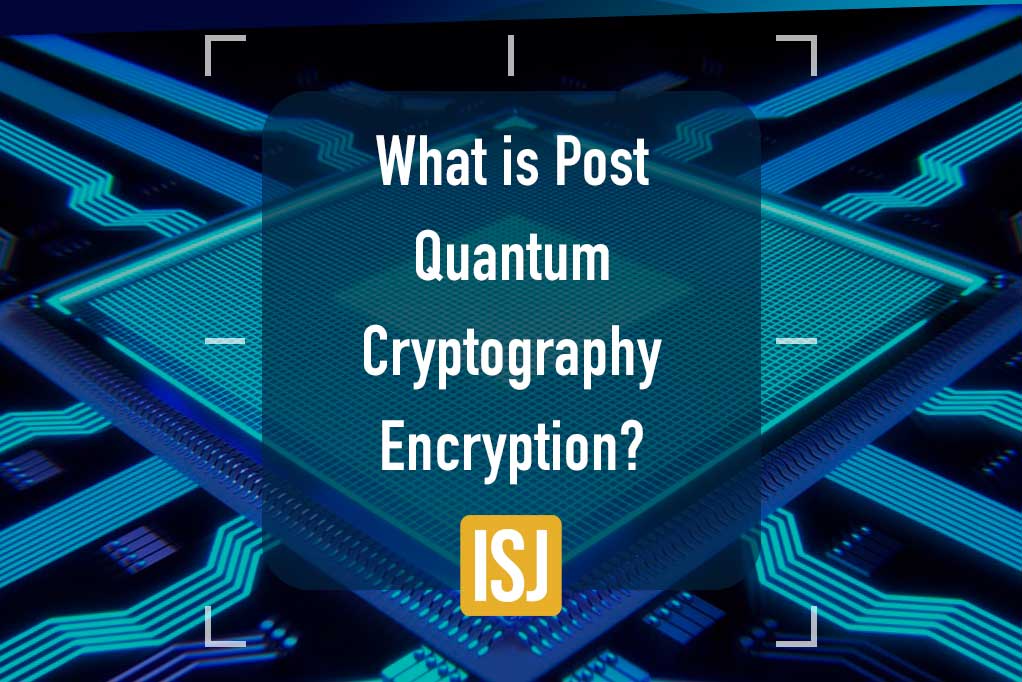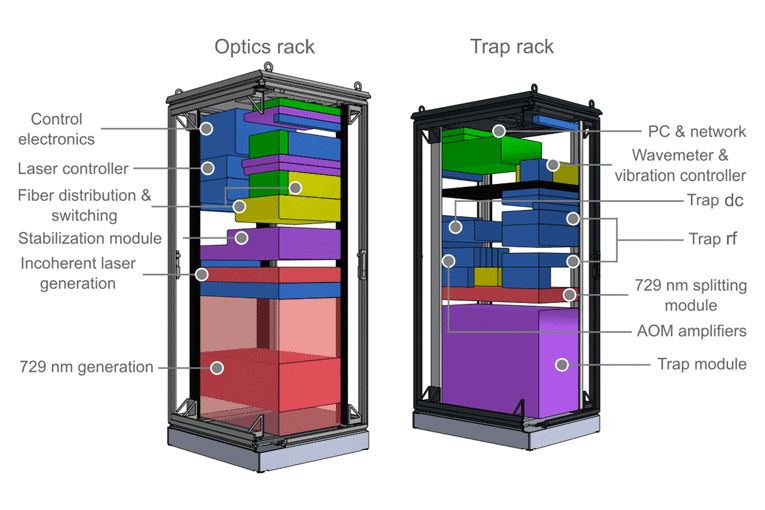What is Post Quantum Cryptography Encryption?


Simon Burge
Share this content
In today’s interconnected world, the need to protect sensitive information is more crucial than ever before.
With advancements in computing technology, traditional cryptographic algorithms are facing an unprecedented challenge posed by quantum computers.
As these powerful machines inch closer to reality, the security of our current encryption methods is at stake.
A new paradigm called Post Quantum Cryptography (PQC) has emerged to safeguard sensitive data from potential attacks.
Post Quantum Cryptography, also known as quantum-resistant or quantum-safe cryptography, refers to a set of cryptographic algorithms designed to withstand attacks from both classical and future quantum computers.
Unlike traditional encryption methods that rely on hard mathematical problems, such as factoring large numbers or computing discrete logarithms, post quantum algorithms are based on mathematical problems that are believed to be resistant to quantum algorithms.
PQC algorithms come in various forms, including symmetric encryption, public-key encryption, digital signatures, and key exchange protocols.
Post quantum algorithms aims to provide cryptographic security that remains intact even in the face of a quantum computer’s immense processing power.
Article Chapters
Toggle- Need for Post Quantum Cryptography in the Era of Quantum Computers
- What’s Involved in Post-Quantum Cryptography?
- Types of Post-Quantum Cryptographic Algorithms
- Security Consideration of Post-Quantum Cryptographic Algorithms
- Implementing Post Quantum Cryptography
- Understand Post Quantum Cryptography
- Assess Your Current Cryptographic Infrastructure.
- Select Post-Quantum Cryptographic Algorithms.
- Update Cryptographic Libraries & Protocols.
- Conduct Thorough Testing
- Evaluate Quantum-Resistant Key Management.
- Prepare for the Transition.
- Stay Updated With The Latest Developments.
- Frequently Asked Questions (FAQs)
- Conclusion
Need for Post Quantum Cryptography in the Era of Quantum Computers

In the era of quantum computers, there is a growing need for Post Quantum Cryptography (PQC).
Quantum computers have the potential to break many of the existing cryptographic algorithms that are widely used today, such as the ones based on factoring large numbers or solving the discrete logarithm problem.
These algorithms form the basis of many secure communication protocols and systems, including encryption, digital signatures, and fundamental exchange mechanisms.
Quantum computers leverage the principles of quantum mechanics to perform computations in ways that can solve some mathematical issues much faster than classical computers.
This has significant implications for cryptography because many widely used cryptographic algorithms rely on the computational hardness of specific problems that quantum computers can efficiently solve.
For example, Shor’s algorithm, a well-known quantum algorithm, can factor in large numbers and break the widely used RSA encryption scheme and other similar algorithms.
To ensure the security of sensitive data and communications in the post-quantum computing era, PQC is needed.
Post quantum cryptography refers to the development and deployment of cryptographic algorithms that are resistant to attacks by both classical and quantum computers.
These algorithms are designed to withstand attacks even when quantum computers become powerful enough to break existing cryptographic schemes.
The research and development of post quantum cryptography aim to identify new mathematical problems that are believed to be hard to solve, even for quantum computers.
These problems are the foundation for developing new cryptographic algorithms that can resist attacks from classical and quantum computers.
Various PQC candidates are currently being investigated, including lattice-based cryptography, code-based cryptography, multivariate cryptography, hash-based cryptography, and more.
The transition to post quantum cryptography is essential because developing, standardising, and deploying new cryptographic algorithms takes time.
The process involves extensive peer review, testing, and evaluation to ensure their security and efficiency.
As quantum computers continue to advance, planning for the transition and gradually replacing existing vulnerable cryptographic systems with post-quantum secure alternatives is necessary.
What’s Involved in Post-Quantum Cryptography?
Several factors need to be considered when integrating new cryptographic systems into existing internet protocols like Transport Layer Security (TLS).
These include the size of encryption keys and signatures, the speed of encryption/decryption and signing/verification processes, and the amount of data transmitted during these operations.
Additionally, thorough cryptanalysis is essential to identify potential weaknesses adversaries could exploit.
The development of quantum-resistant cryptosystems must be conducted transparently, with the involvement of cryptographers, organisations, the public, and governments worldwide to ensure thorough scrutiny and international support.
Moreover, it is crucial to act swiftly because the exact timeline for the vulnerability of current cryptographic systems is uncertain.
Replacing existing cryptography in production software is a complex and time-consuming task.
Additionally, the possibility of adversaries storing encrypted data today and unlocking it in the future using quantum computers adds to the situation’s urgency.
Therefore, it is imperative to prioritise the development and adoption of post-quantum cryptographic standards to safeguard sensitive information effectively.
Types of Post-Quantum Cryptographic Algorithms

Post-quantum cryptographic algorithms, also known as quantum-resistant or quantum-safe algorithms, are designed to be secure against attacks by quantum computers.
Here are some of the main types of post-quantum cryptographic algorithms:
Lattice-Based Cryptography
Lattice-based cryptography is a form of cryptography that relies on the hardness of some mathematical issues related to lattices.
A lattice is a geometric structure formed by an infinite set of points in a multi-dimensional space arranged in a periodic pattern.
Lattice-based cryptography leverages the computational difficulty of solving specific lattice problems to provide security guarantees for cryptographic protocols.
The appeal of lattice-based cryptography lies in its resistance to attacks by quantum computers.
Many traditional cryptographic schemes, such as RSA (Rivest-Shamir-Adleman Cryptography) and ECC (Elliptic Curve Cryptography), are vulnerable to attacks by quantum computers, which can solve some mathematical issues much faster than classical computers.
In contrast, lattice-based cryptography offers a promising alternative that is believed to resist quantum attacks.
Lattice-based cryptographic schemes typically involve mathematical operations on lattices, such as finding the shortest vector in a lattice or solving the “learning with errors” (LWE) problem.
These computationally intensive operations are believed to be difficult to solve efficiently, even with quantum computers.
Lattice-based cryptography has gained significant attention recently due to its potential for post quantum cryptography.
As quantum computers continue to advance, there is a growing need for cryptographic algorithms that can withstand attacks from these powerful machines.
Lattice-based cryptography is one of the leading candidates for post quantum cryptography and is being studied and standardised by various organisations and researchers.
Multivariate Cryptography
Multivariate cryptography is a form of public key cryptography based on the difficulty of solving systems of multivariate polynomial equations.
Unlike traditional cryptographic schemes that rely on number theory or elliptic curves, multivariate cryptography uses algebraic equations as the foundation for its security.
In multivariate cryptography, the public key is derived from a system of multivariate polynomial equations, and the private key is the secret knowledge of how to solve these equations efficiently.
The scheme’s security relies on the computational complexity of solving these equations, which is believed to be difficult even for powerful computers.
The main advantage of multivariate cryptography is its resistance to attacks by quantum computers.
Similar to lattice-based cryptography, many traditional cryptographic schemes are vulnerable to attacks by quantum computers.
However, multivariate cryptography is designed to resist quantum attacks, making it a potential candidate for post quantum cryptography.
Hash-Based Cryptography
Hash-based cryptography, also known as hash-based signatures or one-time signatures, is a type of digital signature scheme that relies on the properties of cryptographic hash functions.
Unlike traditional signature schemes based on number theory or elliptic curves, hash-based cryptography utilises the collision resistance and one-way properties of hash functions to provide security guarantees.
A one-time signature is generated using a cryptographic hash function in hash-based cryptography.
The signing process involves hashing the message with a secret key to create a digest and then applying a one-way function to the digest to produce the signature.
The signature is appended to the message and can be verified by anyone with the corresponding public key.
The security of hash-based cryptography is based on the assumption that the underlying hash function is resistant to collision attacks.
A collision occurs when two different inputs produce the same hash output. In hash-based cryptography, if an attacker can find a crash for the hash function, they can forge signatures and impersonate the signer.
Therefore, the strength of hash-based cryptography depends on the chosen hash function.
One of the main advantages of hash-based cryptography is its simplicity and efficiency.
The signing and verification processes are relatively fast compared to other digital signature schemes.
Additionally, hash-based signatures are typically small, making them suitable for low-resource devices and applications.
Code-Based Cryptography
Code-based cryptography is a form of public key cryptography based on error-correcting codes.
It utilises the hardness of decoding specific codes to provide security guarantees for cryptographic protocols. Unlike traditional cryptographic schemes that rely on number theory or elliptic curves, code-based cryptography operates on the principles of coding theory.
In code-based cryptography, the public key is derived from an error-correcting code, and the private key is the knowledge of the decoding algorithm for that code.
The scheme’s security relies on the computational difficulty of decoding the code without knowing the private key.
The hardness of decoding is usually based on the complexity of solving a specific mathematical problem related to the code.
Supersingular Elliptic Curve Isogeny Cryptography
Supersingular elliptic curve isogeny cryptography (often referred to as SIDH) is a post-quantum cryptographic scheme that is based on the mathematics of elliptic curves and isogenies.
It provides a way to establish secure key exchange protocols resistant to attacks by quantum computers.
In Supersingular Isogeny Diffie-Hellman, the scheme’s security relies on the mathematical hardness of computing isogenies between supersingular elliptic curves.
An isogeny is a function between two elliptic curves that preserves specific algebraic properties.
Supersingular elliptic curves are a specific type of elliptic curve with certain desirable properties for cryptographic applications.
SIDH is designed to be resistant to attacks by both classical and quantum computers.
The computational hardness of computing isogenies thwarts classical attacks.
Quantum attacks, however, are mitigated by the fact that isogeny computations are believed to resist efficient quantum algorithms, such as Shor’s algorithm for factoring and discrete logarithm problems.
Supersingular Isogeny Diffie-Hellman is an active area of research, and various optimisations and improvements have been proposed to enhance its efficiency and security.
The scheme has gained attention as a potential post-quantum cryptographic solution. It is being studied and standardised by organisations such as NIST (National Institute of Standards and Technology) in their efforts to develop post quantum cryptography standards.
Symmetric Key Quantum Resistance
When using sufficiently large key sizes, symmetric vital cryptographic systems like AES and SNOW 3G are already resistant to attacks by quantum computers.
This means that the security of these algorithms remains intact even in the presence of powerful quantum computers.
Similarly, critical management systems and protocols that rely on symmetric key cryptography, such as Kerberos and the 3GPP Mobile Network Authentication Structure, are inherently secure against attacks by quantum computers.
Due to their widespread deployment and proven security, some researchers suggest expanding symmetric key management, akin to Kerberos, as an efficient approach to achieving post quantum cryptography today.
By leveraging symmetric key cryptography in existing systems, it is possible to ensure secure communications without relying on public key cryptography, which may be vulnerable to quantum attacks.
Security Consideration of Post-Quantum Cryptographic Algorithms
Post Quantum Cryptography (PQC) algorithms are designed to resist attacks from quantum computers, which have the potential to break many traditional cryptographic algorithms.
While PQC algorithms offer promising solutions for the future, they also come with their security considerations.
Here are some important security considerations to keep in mind when implementing post quantum cryptography algorithms:
Algorithm Selection
The first consideration is the selection of appropriate post quantum cryptography algorithms.
Choosing algorithms that have undergone thorough scrutiny, analysis, and evaluation by the cryptographic community is essential.
Look for algorithms that have undergone third-party security assessments and competitions and have a well-established reputation.
Implementation Security
The security of any cryptographic algorithm depends on the algorithm itself and its correct and secure implementation.
Implementations of PQC algorithms should follow best practices for secure coding, including
input validation, fast critical handling, and protection against side-channel attacks.
Crypto Agility
Post quantum cryptography algorithms are still evolving, and new algorithms may be developed.
It’s essential to have a crypto-agile system that can easily transition from one PQC algorithm to another without significant disruptions.
This ensures that your system remains secure despite discovering new attacks or vulnerabilities.
Standardisation and Interoperability
Post quantum cryptography algorithms should be standardised to promote interoperability and ensure that different implementations communicate securely.
Standardisation processes ensure that algorithms are thoroughly vetted and provide a level of confidence in their security.
Look for algorithms that have undergone or are undergoing standardisation efforts by reputable organisations.
Cryptanalysis
Post quantum cryptography algorithms should be subject to rigorous cryptanalysis to uncover potential weaknesses or vulnerabilities.
It’s essential to keep track of the latest research and advancements in the field to identify any new attacks or vulnerabilities that may arise.
Performance Considerations
Post quantum cryptography algorithms can be computationally intensive, requiring more resources than traditional cryptographic algorithms.
Consider the performance implications of implementing post quantum cryptography algorithms in your system, including processing power, memory requirements, and bandwidth limitations.
Migration And Transition Planning
Migrating from traditional cryptographic algorithms to post quantum cryptography algorithms can be a complex process.
Planning for a smooth transition is essential, including key management, backward compatibility, and maintaining security during the migration process.
Proper planning and testing can minimise potential security risks during the transition.
Quantum Attacks On Classical Algorithms
While PQC algorithms are designed to resist attacks from quantum computers, they may not be optimised for resistance against attacks from classical computers.
Ensure your system remains secure against classical attacks during the transition to post quantum cryptography algorithms.
It’s essential to consult with experts in post quantum cryptography and follow best practices to ensure the security of your implementation.
Monitoring the latest developments, vulnerabilities, and cryptographic research is crucial for avoiding potential threats.
Implementing Post Quantum Cryptography

Implementing post quantum cryptography involves using cryptographic algorithms and protocols resistant to quantum computer attacks.
While the full-scale deployment of quantum computers capable of breaking current cryptographic schemes is still in the future, it is essential to start preparing for this eventuality.
Here’s an overview of the steps involved in implementing post quantum cryptography:
Understand Post Quantum Cryptography
Educate yourself and your team about post quantum cryptography and its principles.
It involves studying new cryptographic algorithms that are designed to be resistant to attacks from quantum computers.
Assess Your Current Cryptographic Infrastructure.
Evaluate your existing cryptographic infrastructure to identify vulnerable components that need to be upgraded to post-quantum cryptographic algorithms.
This includes encryption schemes, digital signatures, key exchange protocols, and other cryptographic primitives used in your systems.
Select Post-Quantum Cryptographic Algorithms.
Research and select suitable post-quantum cryptographic algorithms that fit your specific requirements.
There are several families of algorithms to choose from, including lattice-based, code-based, multivariate polynomial-based, and hash-based algorithms.
Consider factors such as security, performance, and compatibility with existing systems.
Update Cryptographic Libraries & Protocols.
Update your cryptographic libraries and protocols to include the selected post-quantum cryptographic algorithms.
This may involve integrating new libraries, modifying existing code, or adopting new protocols.
Make sure to follow best practices and security guidelines specific to each algorithm.
Conduct Thorough Testing
Perform rigorous testing of the updated cryptographic components to ensure their correctness, security, and performance.
Test interoperability with different platforms and systems, validate resistance against known attacks and assess the impact on overall system performance.
Evaluate Quantum-Resistant Key Management.
Quantum computers can break traditional public-key cryptography by factorising large numbers or solving the discrete logarithm problem.
Quantum-resistant key management schemes, such as post-quantum digital signatures and key exchange protocols, should be implemented to protect against these attacks.
Prepare for the Transition.
Plan for the transition from current cryptographic algorithms to post-quantum cryptographic algorithms.
Consider the logistics, time frame, and potential system compatibility and user experience impacts.
Develop migration strategies and communicate the changes to stakeholders and users.
Stay Updated With The Latest Developments.
Post quantum cryptography is still an active area of research, and new algorithms and improvements continue to emerge.
Stay informed about the latest developments, vulnerabilities, and best practices to ensure the long-term security of your cryptographic infrastructure.
Remember that implementing post quantum cryptography is complex and may require expert knowledge in cryptography and software development.
It’s advisable to consult with cryptography experts and engage in security audits to ensure your systems’ highest level of security.
Frequently Asked Questions (FAQs)
Does Post Quantum Cryptography Exist?
Yes, post quantum cryptography exists as an active field of research and development.
Post quantum cryptography refers to cryptographic algorithms and protocols designed to resist attacks from quantum computers.
Researchers are working on developing new algorithms based on different mathematical problems that are believed to be difficult for both classical and quantum computers to solve.
These algorithms aim to provide security against attacks from powerful quantum computers that could break current cryptographic schemes, such as factoring large numbers or solving the discrete logarithm problem.
While post quantum cryptography is still being standardised and integrated into practical systems, significant progress has been made in developing quantum-resistant algorithms.
What is the difference between QKD and post quantum cryptography?
Quantum Key Distribution (QKD) and post quantum cryptography are two different approaches to addressing the impact of quantum computers on cryptography.
QKD focuses on a secure key exchange using quantum properties, offering a method to establish specific communication channels.
It primarily tackles the distribution of encryption keys. In contrast, post quantum cryptography deals with developing new cryptographic algorithms that can resist attacks from quantum computers.
It aims to replace current encryption, digital signature, and critical exchange schemes with quantum-resistant alternatives, ensuring the long-term security of cryptographic systems in the post-quantum era.
Post quantum cryptography goes beyond key distribution and covers a broader range of cryptographic primitives.
Who Are The Candidates For Post Quantum Cryptography?
Several families of algorithms are considered candidates for post quantum cryptography, including lattice-based, code-based, multivariate polynomial-based, hash-based, and isogeny-based schemes.
Examples of specific algorithms include NTRU, SIDH, LWE, and hash-based signature schemes like XMSS and SPHINCS+.
These algorithms are being researched and evaluated for suitability in a post-quantum cryptographic landscape.
Conclusion
In conclusion, post quantum cryptography encryption refers to developing and implementing cryptographic algorithms that can resist attacks from quantum computers.
As quantum computing advances, traditional cryptographic schemes become vulnerable, necessitating the adoption of quantum-resistant alternatives.
Post quantum cryptography offers a proactive approach to safeguarding sensitive information and ensuring long-term security in the face of emerging quantum threats.
To learn more about Post Quantum Cryptography, check out our Crypto Agility – Protect Yourself Against “Steal Now, Decrypt Later article!

